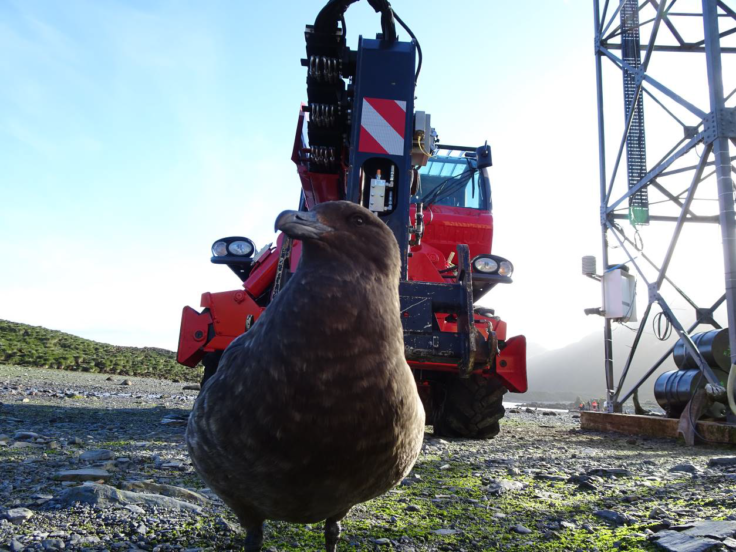Guest blog: arriving at Bird Island
17 November, 2017 Bird Island
One misty day last week (November 2017), the RRS James Clark Ross arrived at Bird Island in the Southern Atlantic Ocean. On board was Daan Aldenberg, from BAM International, partner in the BAS Antarctic Infrastructure Modernisation programme. Bird Island is first to kick off, and Daan will be Project Manager when work begins in February 2018. Here he talks about the challenges of delivering construction kit onto the beach at Bird Island.
For two weeks we have been aboard the RRS JCR (Royal Research Ship James Clark Ross) to re-supply the remote island stations of Bird Island, Signy and KEP, and drop off specialized teams from British Antarctic Survey (BAS) who will be working there for the summer season – and longer. Our goal is to visit the islands for project development as part of the construction partnership between BAS and BAM, as well as to guide the initial mobilisation of the Bird Island project, which consists of delivering a 14-tonne telehandler and seven fuel tanks, which are to be offloaded onto the beach.
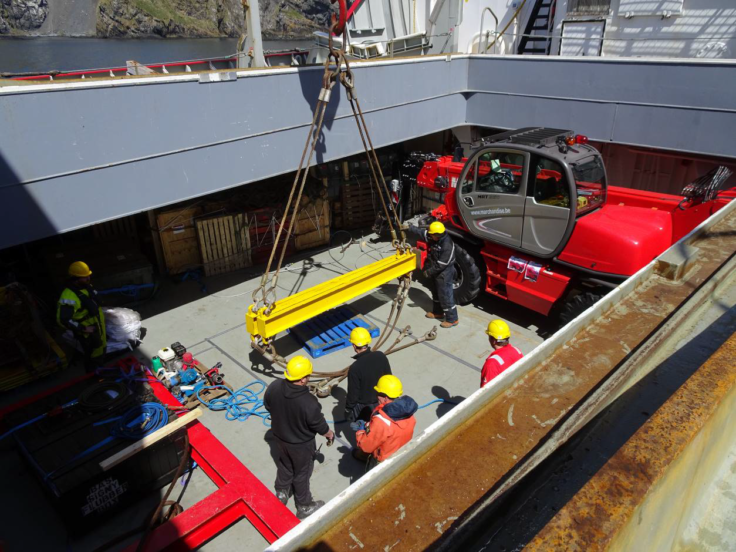
Bird Island
Bird Island is a small island located north-west of the island of South Georgia and was discovered during the British expedition under James Cook in 1775. As part of South Georgia, Bird Island is administered by the Government of South Georgia and South Sandwich Islands (GSGSSI), which issues permits to BAS researchers and other visitors. The island is currently a Site of Special Scientific Interest, and so no landings are allowed without permission. BAS has the only research station on the island which accomodates 10 staff. Scientific research is mainly focussed on the numerous birds breeding on the island such as the wandering albatross and gentoo penguins as well as fur seals, which are also present in large numbers on the island and can be seen directly around the BAS station on the beach.
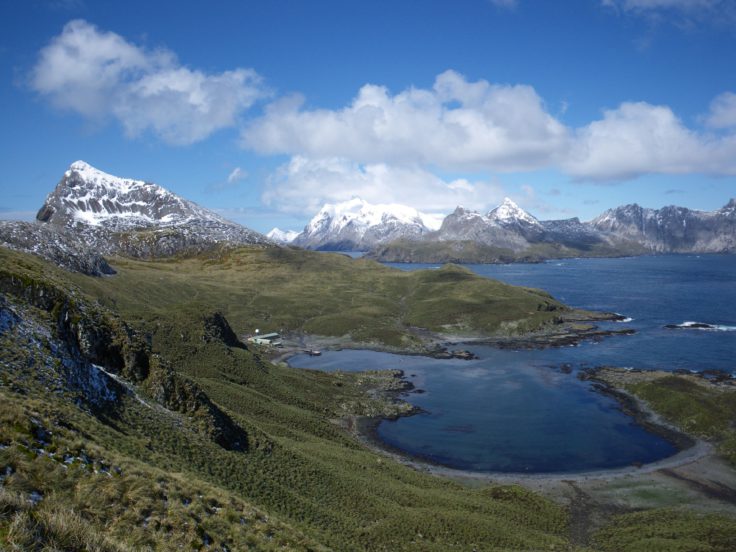
Offloading the telehandler onto the beach
As large vessels cannot berth at Bird Island, all offloading is done by cargo tender. On the day we arrived, sea conditions were way too rough for offloading construction equipment. Luckily the weather improved slightly the following day, and the captain made the decision to move into a nearby bay where conditions were calmer, though increasing the sailing distance for the tender which had to pass through a narrow sea strait called ‘ Bird Sound’. Lifting the 14-tonne telehandler from the JCR into the tender was a delicate operation, but it went well.
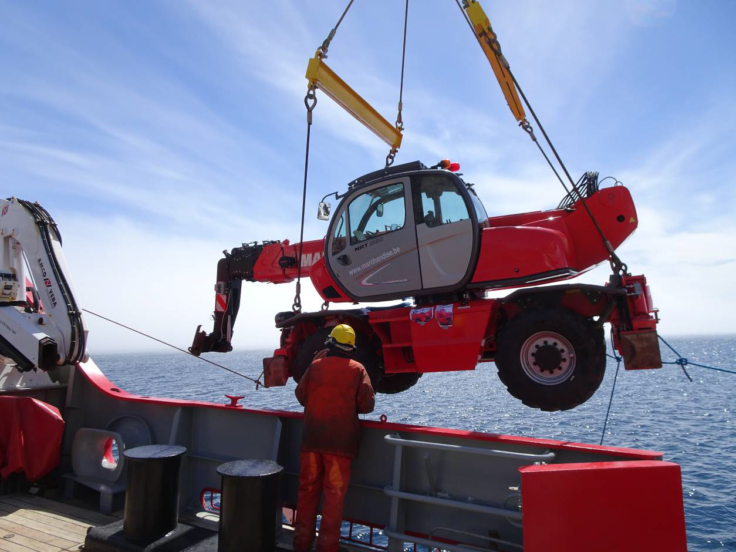
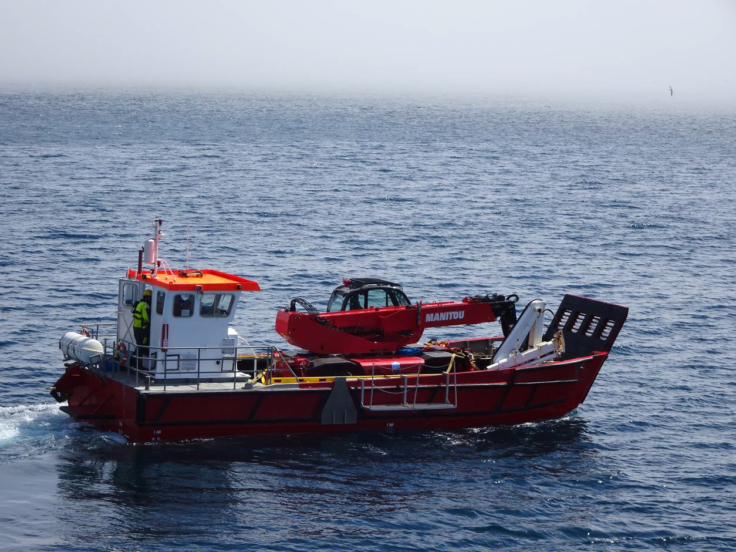
Once sea-fastened, the small convoy of the tender and a guiding RIB (inflatable boat) disappeared into the mist through the ‘Bird Sound’ strait. As visibility dropped further, the tender vessel had to be guided though the mist using radar and radio communication from the main ship. Although the offloading was prepared on paper and discussed around meeting tables several times, the real situation is something else, and in these conditions it was a relief to all involved when the convoy safely arrived in Bird Island bay.
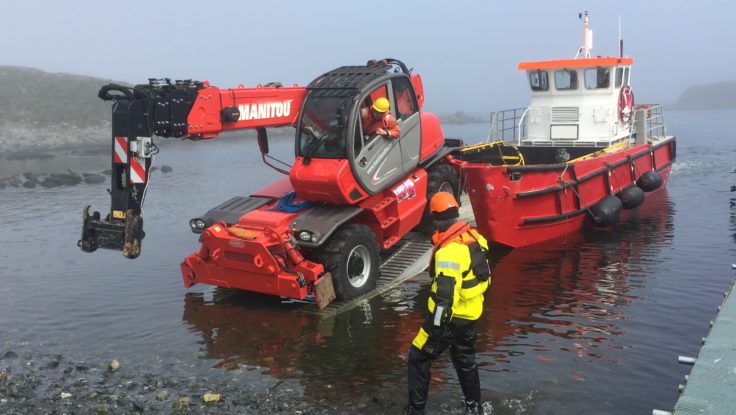
With the fur seal breeding season starting next month, the fur seals already located on the beach were extremely territorial and not prepared to give way to trespassers. But with expert guidance from BAS scientists, and carefully respecting the fur seals whereabouts, the telehandler was safely parked next to the BAS building, where it stands ready for when the BAM team arrives in February to start construction.
